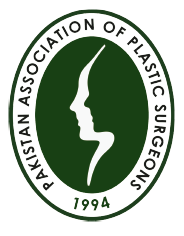Pressure Sores
People who are unable to move because of a disability or illness can develop pressure sores.
After prolonged contact with a surface like a mattress or wheelchair seat, the skin that covers a bony prominence breaks down, causing the sores themselves. While pressure injuries can be treated with dressings and prescription, for a patient’s reconstructive medical procedure to fix the impacted region is the most conclusive therapy choice.
What causes this condition?
During sickness, the blood-stream around individuals’ bodies can be limited. At the point when somebody is immobilized, pressure is created by the point of interaction between their body and the surface on which they are sitting or lying. This tension further lessens blood-stream to the contact region, and the encompassing tissue kicks the bucket. After that, a blister that soon turns into a hole appears. These openings, or bruises, can cause disease and can be challenging to recuperate.
Individuals who are most in danger of forming pressure wounds fall into two classes:
Paraplegics are people who are paralyzed and have to use a wheelchair. They may have spina bifida, multiple sclerosis, or a spinal injury. Because they are unable to move and have no feeling in their lower bodies, these people run the risk of constantly coming into contact with their wheelchair seats and developing pressure sores on their buttocks.
The debilitated and the old
Individuals who are restricted to their bed, including the old, individuals in trance states, or individuals experiencing long haul sickness or handicap, are in danger of creating ‘bed bruises’ on any piece of the body that is in consistent contact with their sleeping pad. Body parts that are especially defenseless to bed wounds incorporate the heels, the bottom, the rear of the head, the back, and the shoulders.
What types of treatments are available, and how do they work?
The risk of pressure sores is taken very seriously in care homes and hospitals. Nurture intently screen patients for bruises, and in most consideration conditions there are thorough counteraction plans set up. If a patient is physically able to do so, nurses will encourage them to inspect any areas of their bodies that might pose a risk. Special cushions designed to alleviate some of the pressure that causes sores are frequently provided to wheelchair users.
Sadly, anticipation isn’t generally effective, and for those patients that in all actuality do foster tension wounds the impacted regions will be treated with at first with dressings. It’s critical to figure out what caused the sore and, if possible, fix it. Overseen in this manner most strain bruises will ultimately recuperate up albeit this can require numerous weeks or months. In an attempt to speed up the healing process of a wound, surgery may be considered from time to time.
Plastic specialists will extract the sore and use fold remaking to fill the opening. Fold remaking includes the exchange of a living piece of tissue starting with one piece of the body then onto the next, alongside the vein that keeps it alive. The activity is planned to close the strain sore and empower the injury to mend, and subsequently reestablish ordinary capability as quickly as time permits.
Who will I consider to be patient?
As a patient with pressure bruises, you will be seen by a multidisciplinary group. Specialists will collaborate on this team to ensure that the best possible treatment is provided. These experts might incorporate the accompanying:
• Clinical medical caretaker subject matter expert
• Tissue feasibility nurture
• Plastic specialist
• Word related specialist
• Physiotherapist
What would it be advisable for me to anticipate concerning treatment, strategies and results?
Most patients ought to hope to be mended with pressure help and dressings. For painstakingly chosen patients medical procedure can likewise be useful. Pressure sore tasks are significant techniques. You can hope to be in a medical clinic for no less than a little while after the activity. When the sore is recuperated you can expect a reviewed succession of step by step permitting more tension on the mended region to guarantee that it stays recuperated. It is fundamental after the activity to keep up with all potential means to assuage unnecessary tension and consequently forestall further bruises.

